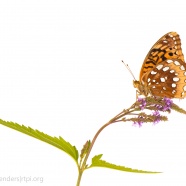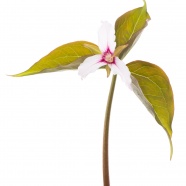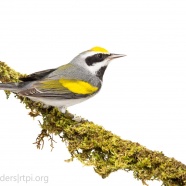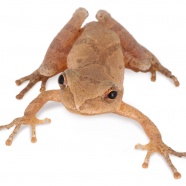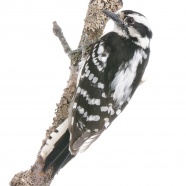The Great Spangled Fritillary!
The Great Spangled Fritillary (Speyeria cybele) and other native butterflies provide added splashes of color on summer days as they flit about our flower gardens, parks and roadsides. Butterflies don’t need much to thrive in our immediate vicinity. As long as you take extra care to plant native flowering plants that provide healthy foods for these animals (rather than non-native ornamental plants that don’t offer such benefits to our insects) and don’t spray pesticides, butterflies will be there to brighten your day (and pollinate your other flowers and veggies)!
Read MoreSpring Ephemerals
Trilliums like the one shown here – and other ‘spring ephemeral’ wildflowers – only bloom for a short period of time in early spring; they then die back to their underground root system. But what a welcome show they put on each year, after we’ve been seeing nothing but snow for months! Before the tree canopy in our forests fully leaf out, the forest floor is briefly carpeted with flowers. Please enjoy them where they are found – in their native woodland habitat. Tempting as it may be to transplant some to your garden, most of these plants don’t survive and they are becoming...
Read MoreGolden-winged Warbler
Without a doubt, one of the highlights of our recent work in Costa Rica was the recapture of this Golden-winged Warbler, which was banded last year in the same area it was caught this year, near Rara Avis Rainforest Lodge. Since we last saw it in March of 2016, it undoubtedly traveled back to its breeding grounds somewhere in North America and hopefully managed to find a mate of its own species. Golden-winged Warblers are suffering from dramatic declines throughout their range, and are increasingly hybridizing with closely-related Blue-winged Warblers. As a result, this species is at serious...
Read MoreSpring Peepers
Spring Peepers are a type of small tree frog. Truthful to their name, they emerge from hibernation in early spring. Soon after, the males – often hundreds at a time – will take over wetlands and call on warm and rainy nights to stake out a territory and attract a mate. Their surprisingly loud “peep” calls are usually produced from a safe location hidden in dense vegetation, and it can be difficult to spot them. An inflatable vocal sac on their throat serves as an amplifier, which allows them to call very loudly. The sound produced by a chorus of these inch-long frogs can be truly deafening...
Read MoreDowny Woodpecker
The Downy Woodpecker (Picoides pubescens) is an industrious little bird that frequents parks and woodlots throughout much of North America. While often spotted at backyard feeders with similarly sized chickadees and nuthatches, this black-and-white woodpecker is also at home on tiny branches where it can be seen acrobatically foraging for insect larvae. Roger Tory Peterson described this bird’s call as “a rapid whinny of notes, descending in pitch.” Keep an eye and an ear out for this charismatic little bird; its striking plumage, shrill song and tree-trunk tapping should...
Read More



